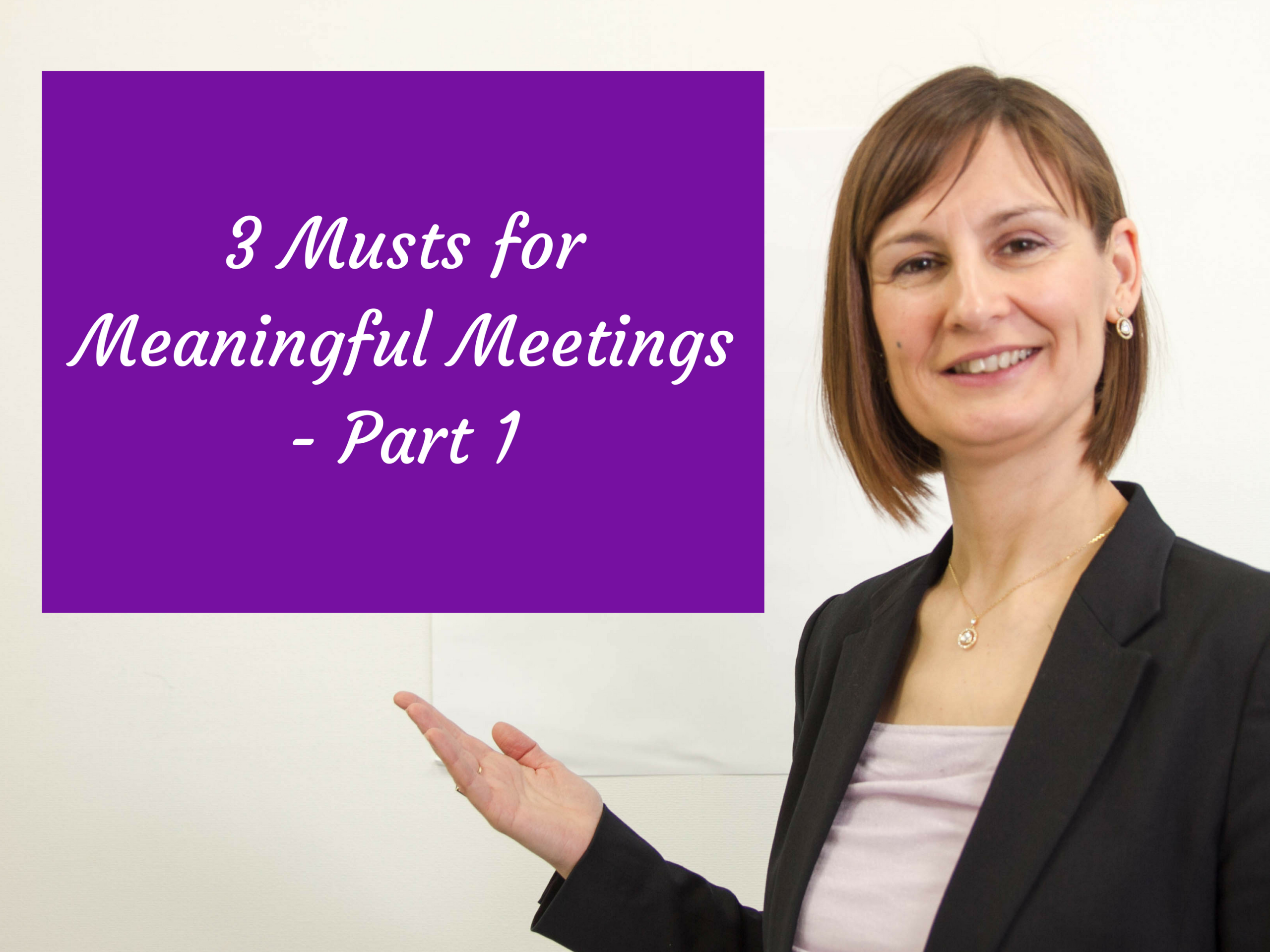Do you have a facilitator in your business meetings?
It’s the facilitator’s role to lead the meeting and make it easy for participants to achieve the meeting goals.
Did you know that the word “facilitate” comes from the Latin “facilis,” which means “easy”?
Sadly, in many businesses, it’s not easy to achieve meeting goals. Meetings are time-consuming. They go off topic. Participants don’t feel motivated to speak up and contribute.
Instead of producing results, meetings produce wasted time and frustration. Sound familiar?
So let’s make this easy.
In this 3-part series, I’m introducing 3 steps to make your meetings efficient and meaningful – whether in person or on conference calls, for small or large groups, and for any cultural background.
And even if you’re not the facilitator, I’ll include tips for you so that you can contribute to better meeting results and a greater sense of work satisfaction.
So simple. So effective. So under-used.
First things first.
Clarify the meeting goals
Does this sound obvious?
It’s amazing how often meeting goals aren’t clarified.
You may think, “Oh, but we circulate an agenda by email in advance, so that’s where we clarify the goals.”
Really?
Look at a recent agenda. Does it specify the goals? Or is it a list of topics, such as “Product promotion,” “Budget,” and “Manager’s report”?
If goals aren’t specified, meeting participants make different assumptions about what is expected. For example, if the agenda says “Product promotion,” participants could interpret the goal as to
- announce the plan for product promotion
- identify challenges related to promoting the product
- confirm sufficient resources to promote the product
- generate an idea to promote the product
- generate 10 ideas to promote the product
When participants have different interpretations of the goal, they easily go off track.
Be clear about the goal to keep everyone focused. For example, here are the 3 agenda items I mentioned and how you could specify them as clear goals:
- Product promotion -> Generate 3-5 ideas to promote the product
- Budget -> Agree on the budget for the new project
- Manager’s report -> Decide a timeline to roll out the new service based on the manager’s report
Once the goal is clear for the facilitator, it’s important to get everyone’s agreement at the beginning of the meeting. Useful phrases here are
“For our goals today, I’d like to propose x, y, and z.”
“Does anyone have anything to add?”
(After giving people a chance to speak) “Thank you. So we are agreed that our goals today are x, y, and z.”
You may even want to write these on a whiteboard to help keep everyone focused.
Clarifying goals doesn’t end here. It’s interesting to see how easily meetings go off topic. So the facilitator needs to remind participants of the goals from time to time during the meeting. This is where it’s useful to refer to the whiteboard.
At the end of the meeting, the facilitator’s role is to confirm that the goals have been reached and what the next steps are – who does what by when. If the goals haven’t been reached, the facilitator proposes how to follow up.
If you’re not the facilitator
Even if you’re not the facilitator, you can make a powerful contribution in meetings with unclear goals by asking for clarification. You may hesitate because you think you’re the only one who doesn’t know.
I’ve joined multiple meetings in reputable companies with highly intelligent participants and often seen discussions go round in circles until someone had the courage to ask, “What specifically is our goal in this meeting?”
If speaking up in the meeting is too big a step for you at first, ask a trusted colleague after the meeting what their understanding of the goal was. That will help you to confirm whether people really understood. And if the goal wasn’t clear to everyone, it will give you more confidence to ask next time.
Do everyone a favor by stepping out of your comfort zone and asking for clarification.
Next week, in part 2 of this series, we’ll look at the second “Must” for meaningful meetings.
Until then, enjoy putting what you’ve learned into practice and clarify the goals in your next meeting.

